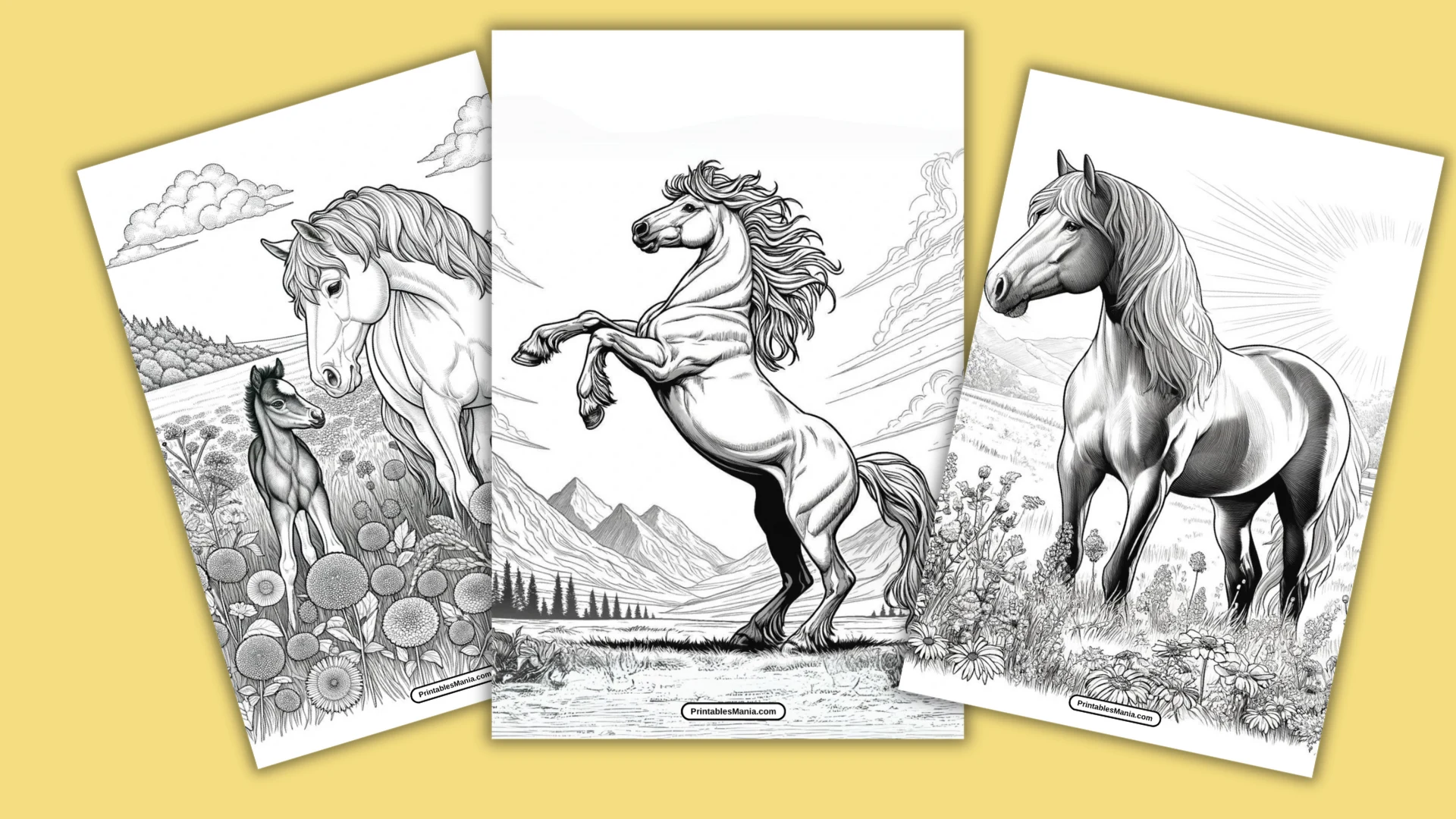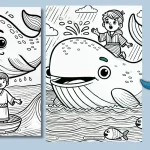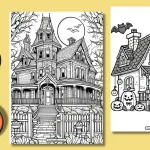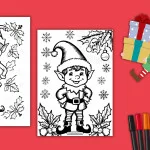Whether you are a horse enthusiast, an artist, or simply looking for a fun and relaxing activity, our detailed horse illustrations provide a perfect canvas for your creativity. These pages are designed to offer a rewarding coloring experience, with intricate details that capture the beauty and grace of horses.
Perfect for All Ages
While these pages are suitable for both kids and adults, their realistic designs make them especially appealing to older children and adults who enjoy more detailed and complex coloring activities. Each page is carefully crafted to provide a satisfying and engaging coloring experience.
Why Color Realistic Horse Pages?
- Stress Relief: Coloring can be a great way to unwind and de-stress after a long day. The detailed lines and patterns in our realistic horse pages offer a meditative activity that can help calm the mind.
- Artistic Expression: These pages allow for a wide range of artistic expression. Experiment with different coloring techniques, from shading to blending, to bring these beautiful horse images to life.
- Educational Value: For those interested in learning more about horses, coloring these realistic images can help you better understand horse anatomy and appreciate the nuances of their appearance.
Get Started
Browse through our selection of realistic horse coloring pages and pick your favorites. Grab your coloring tools—whether it’s colored pencils, markers, or crayons—and start creating your own masterpiece. Enjoy the process and let your imagination run wild! Happy coloring!
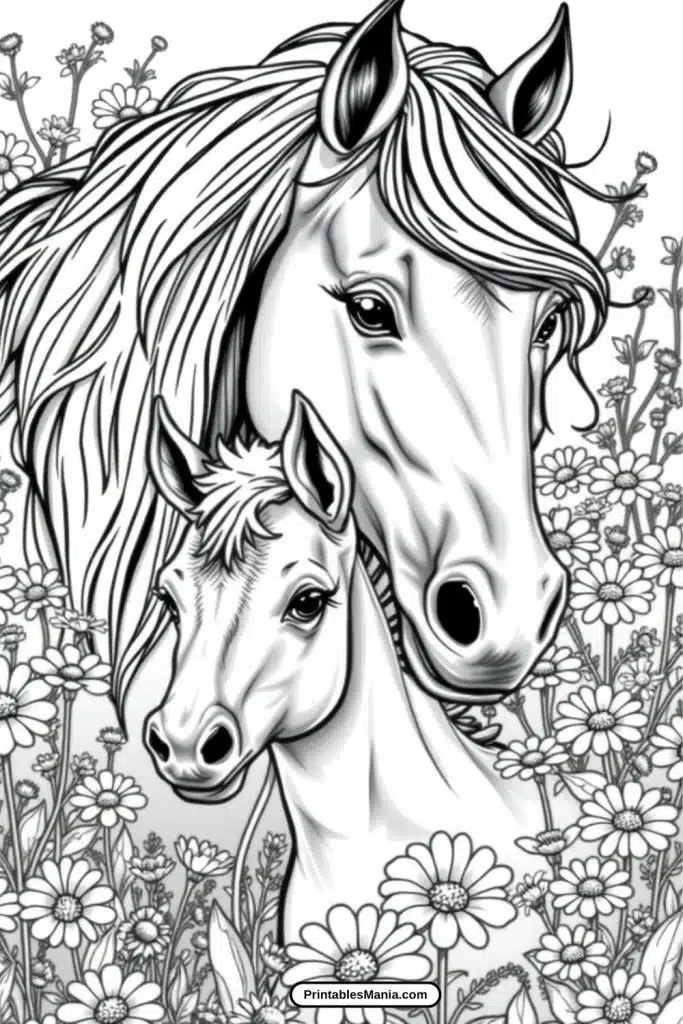
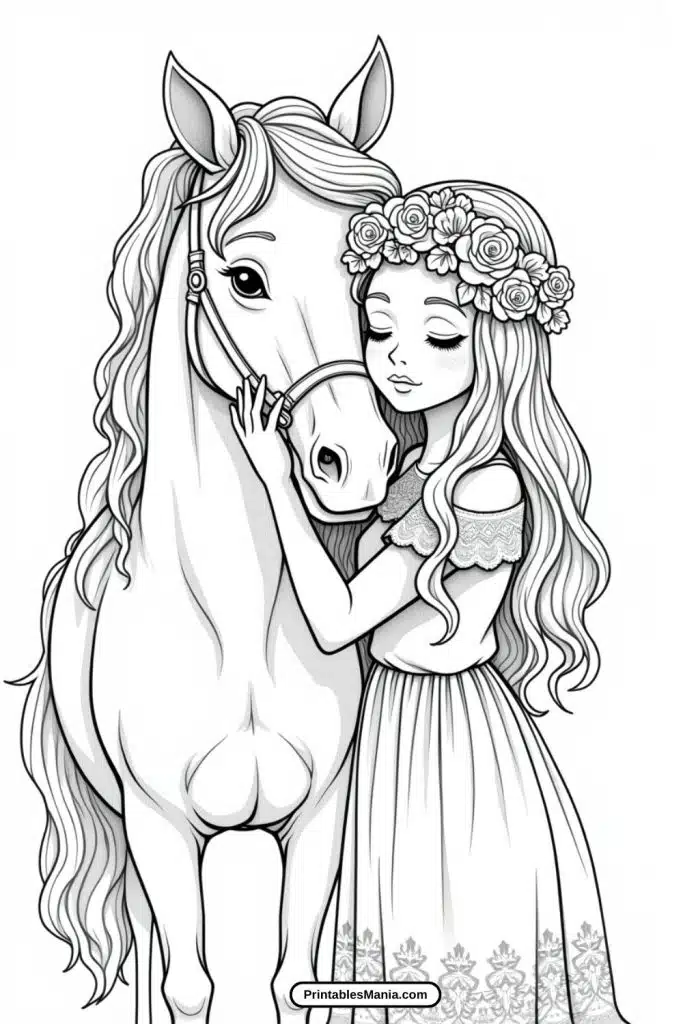
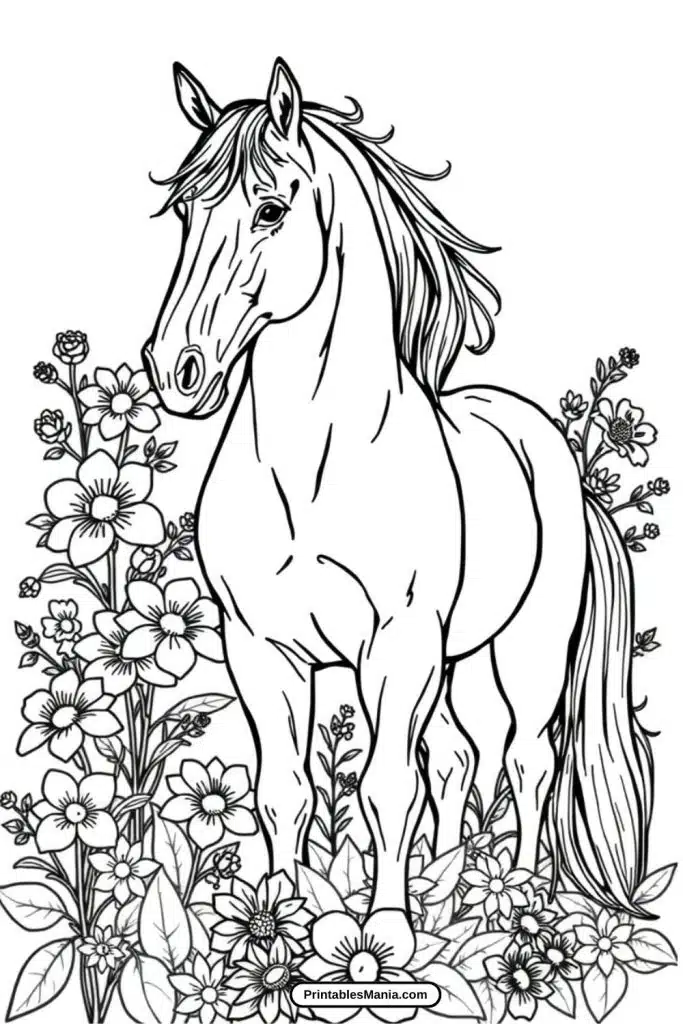
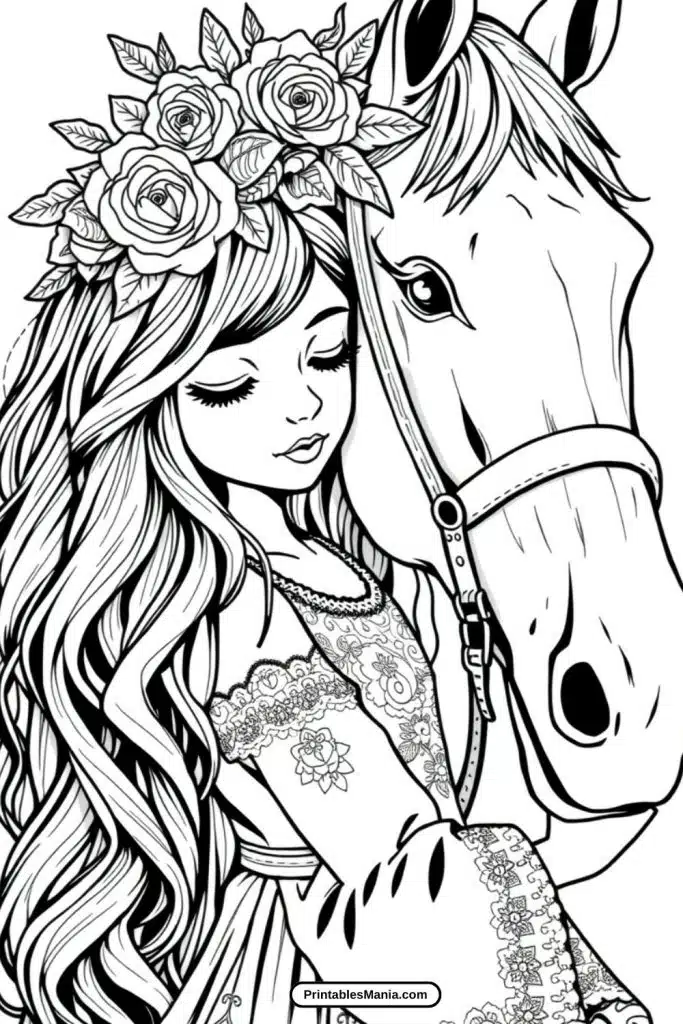
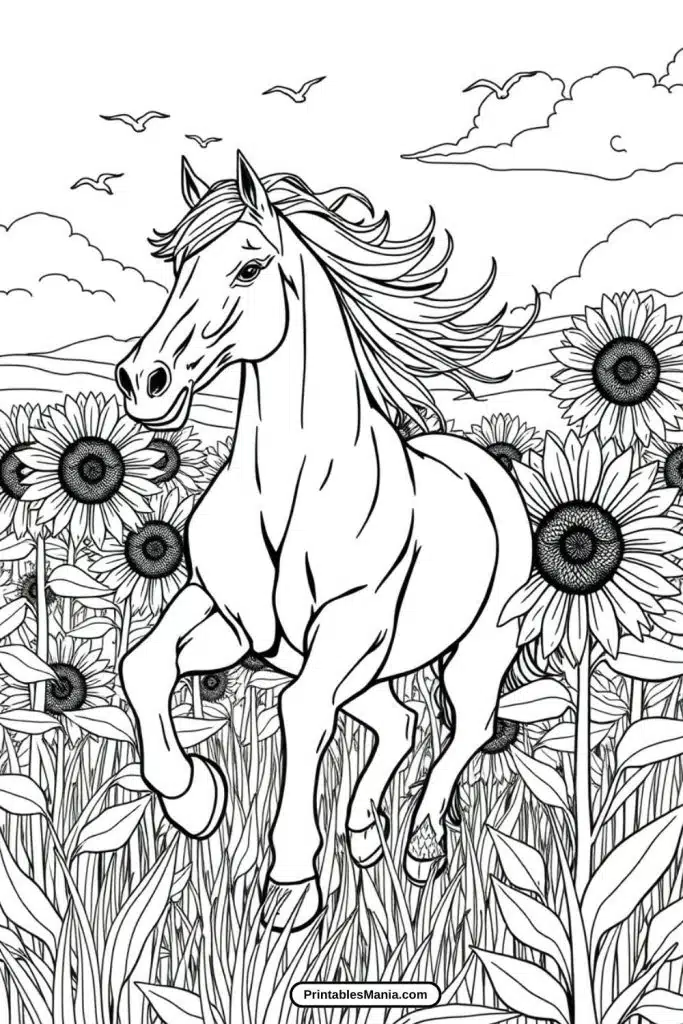
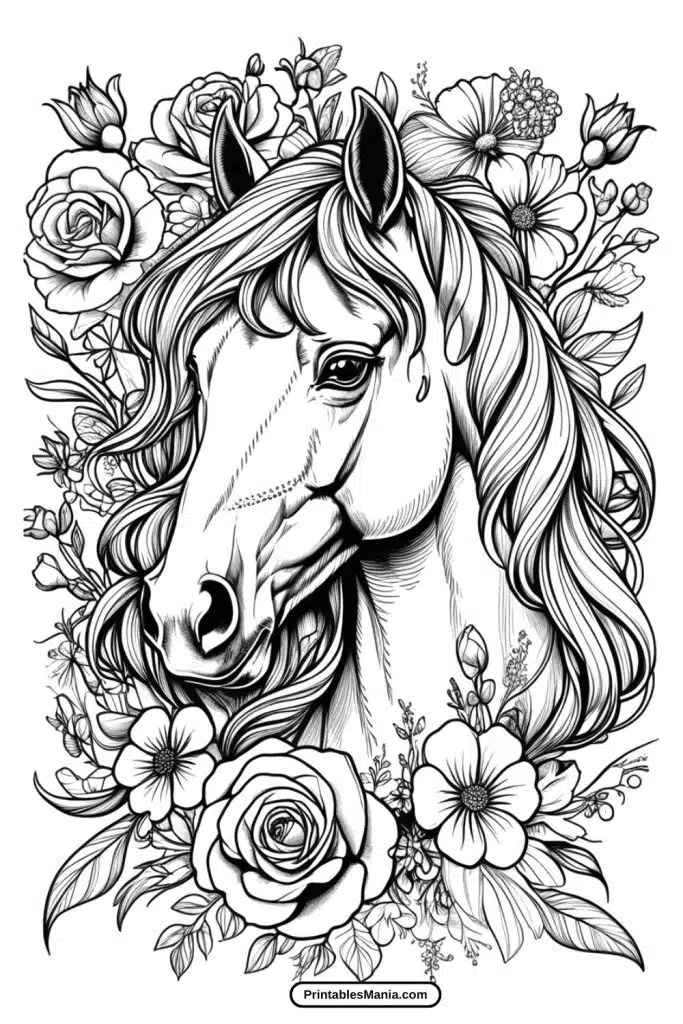
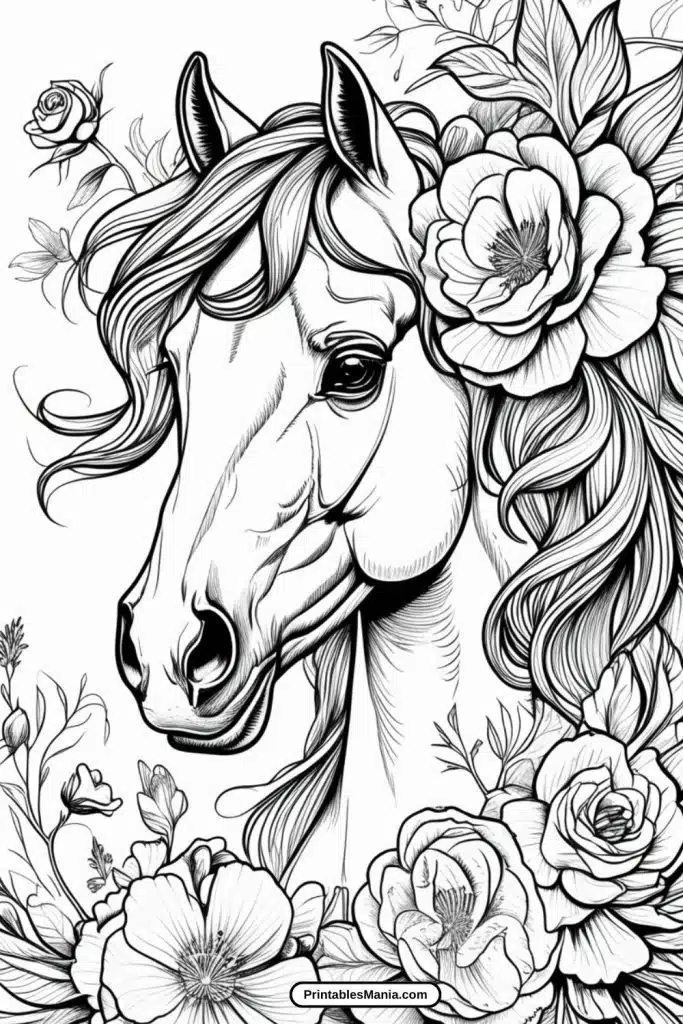
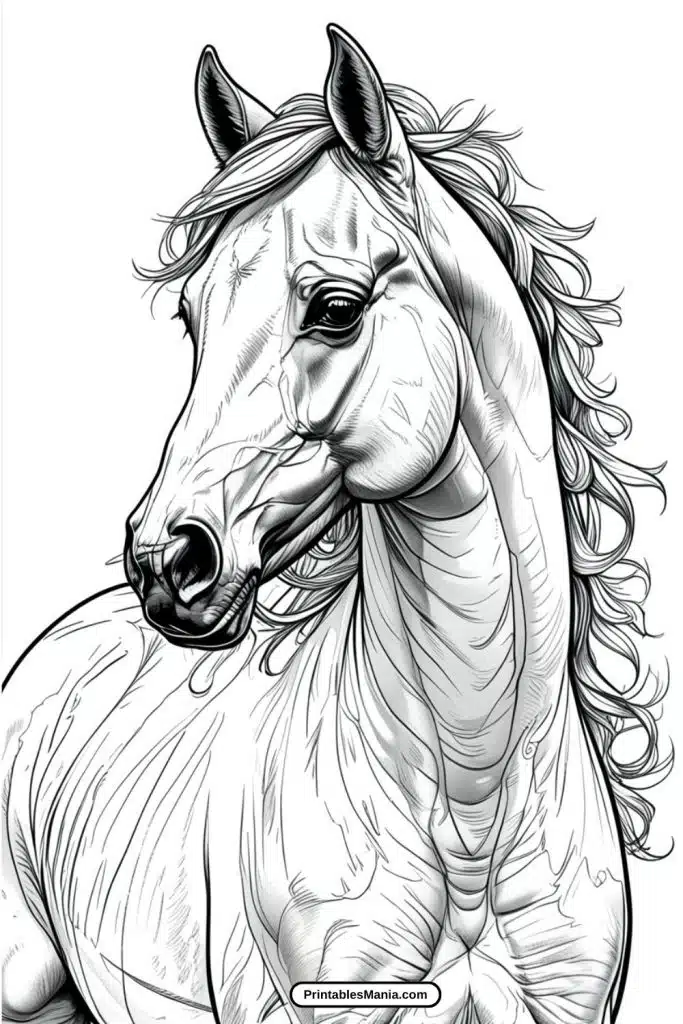
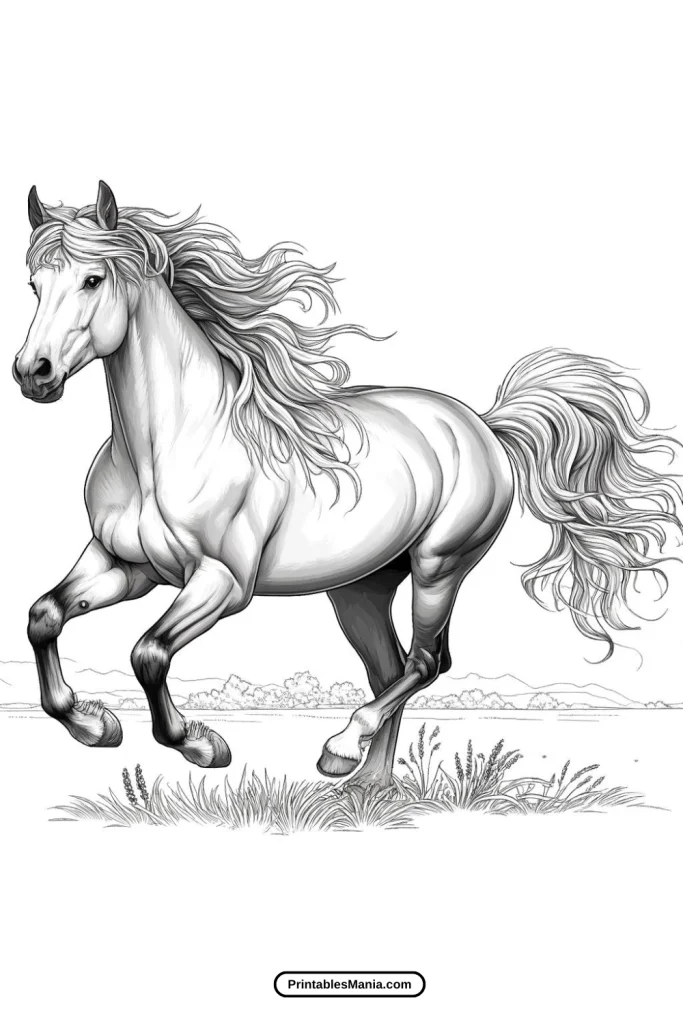
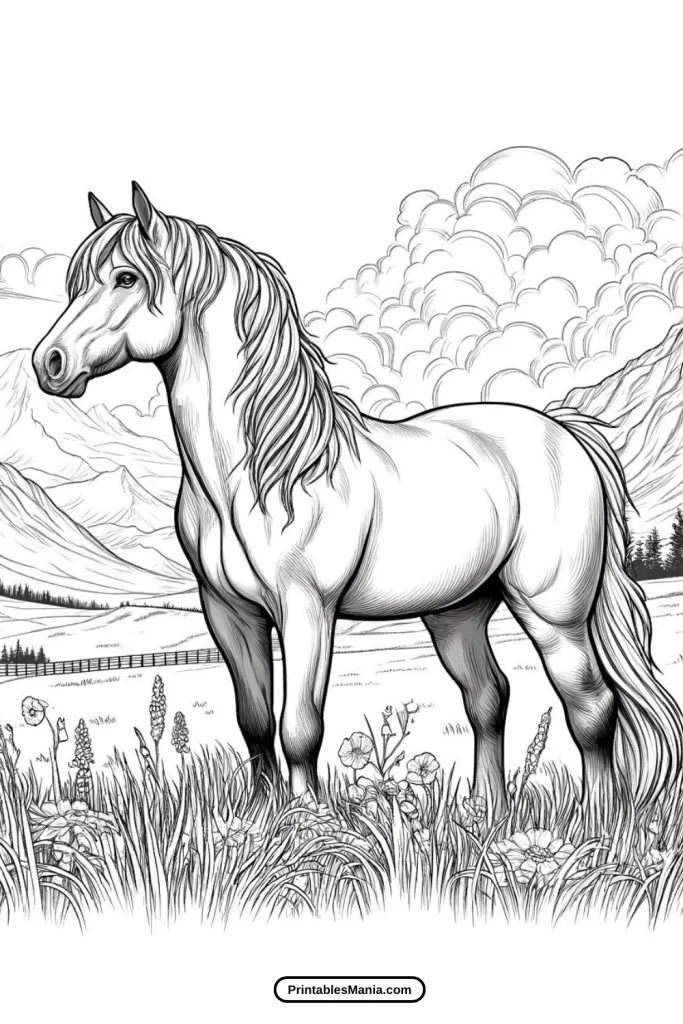
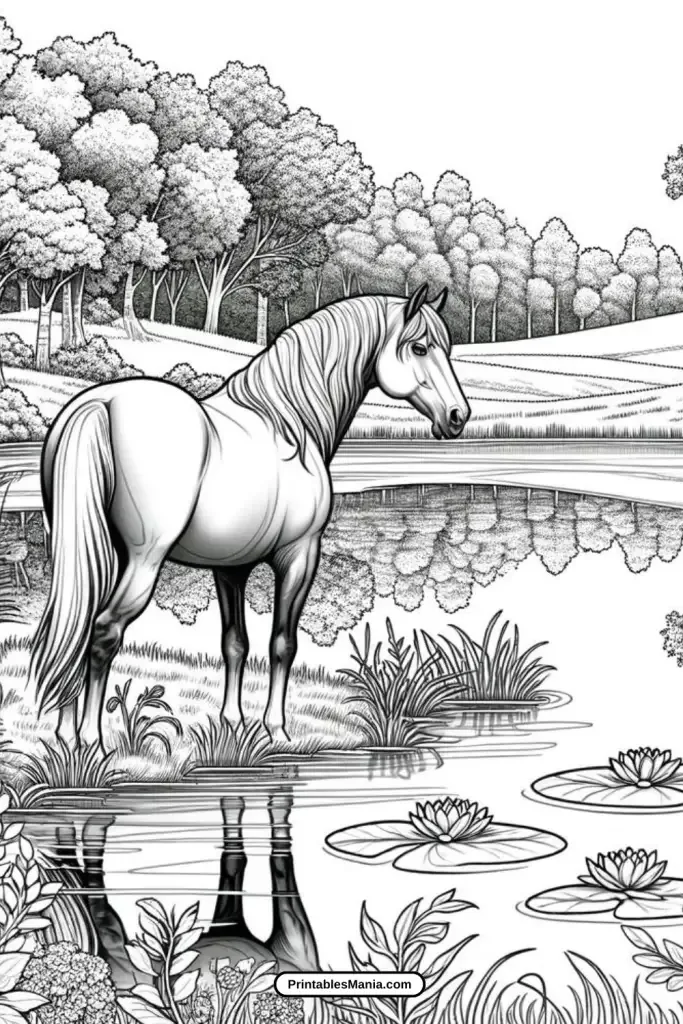
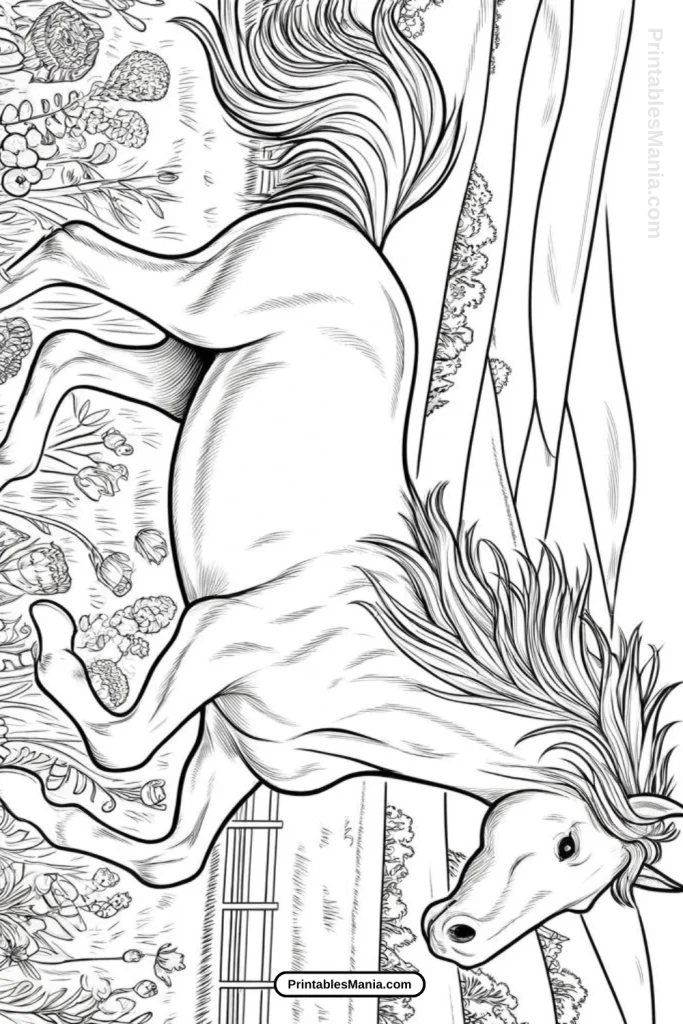
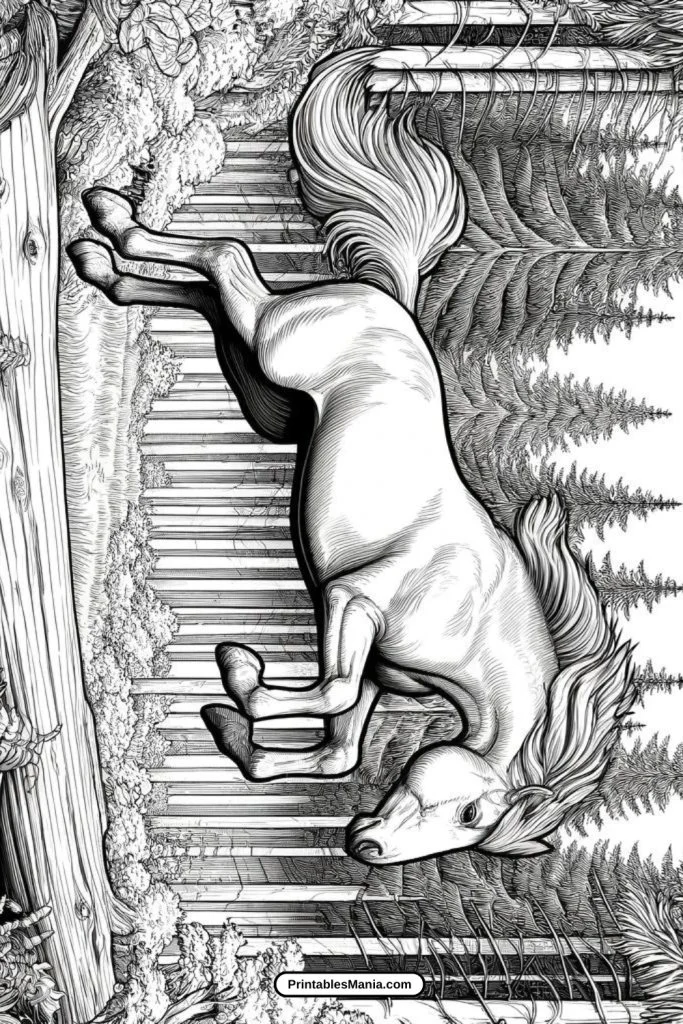
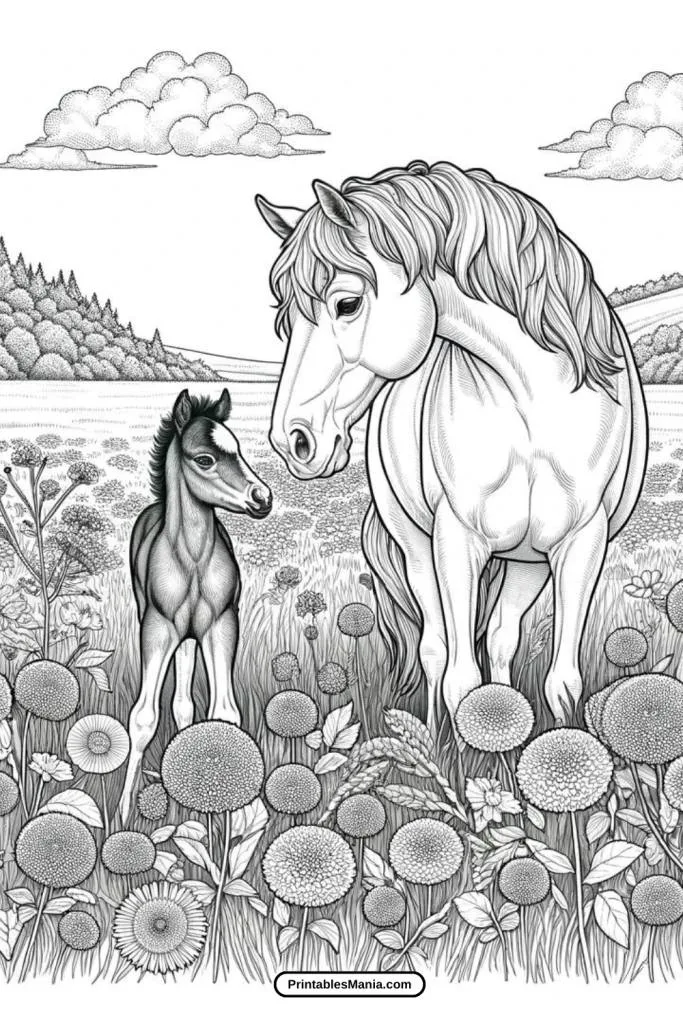
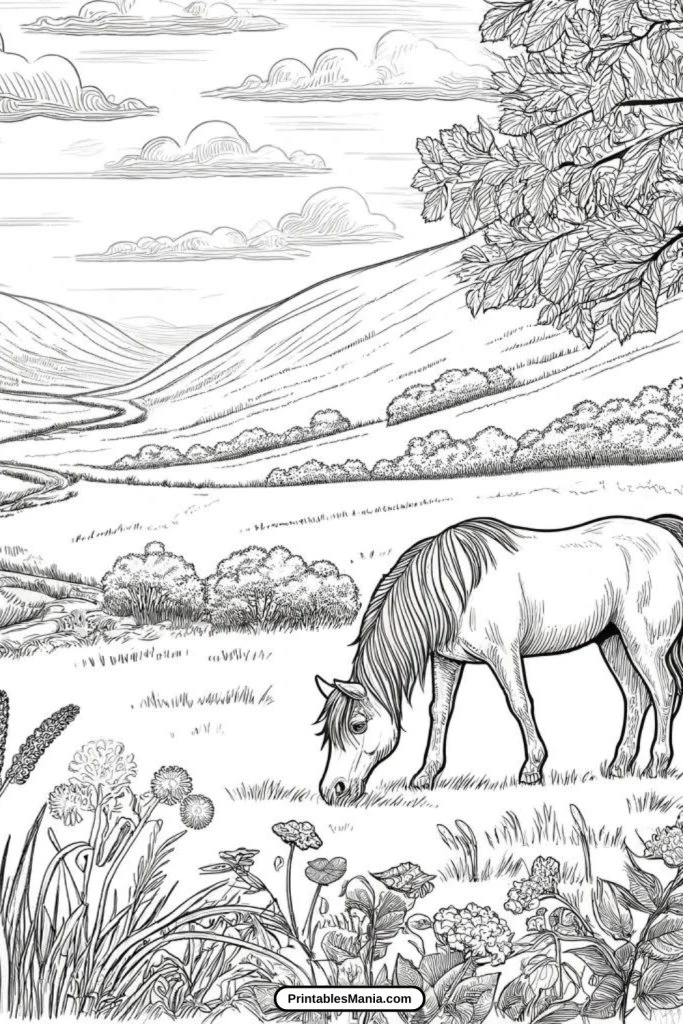
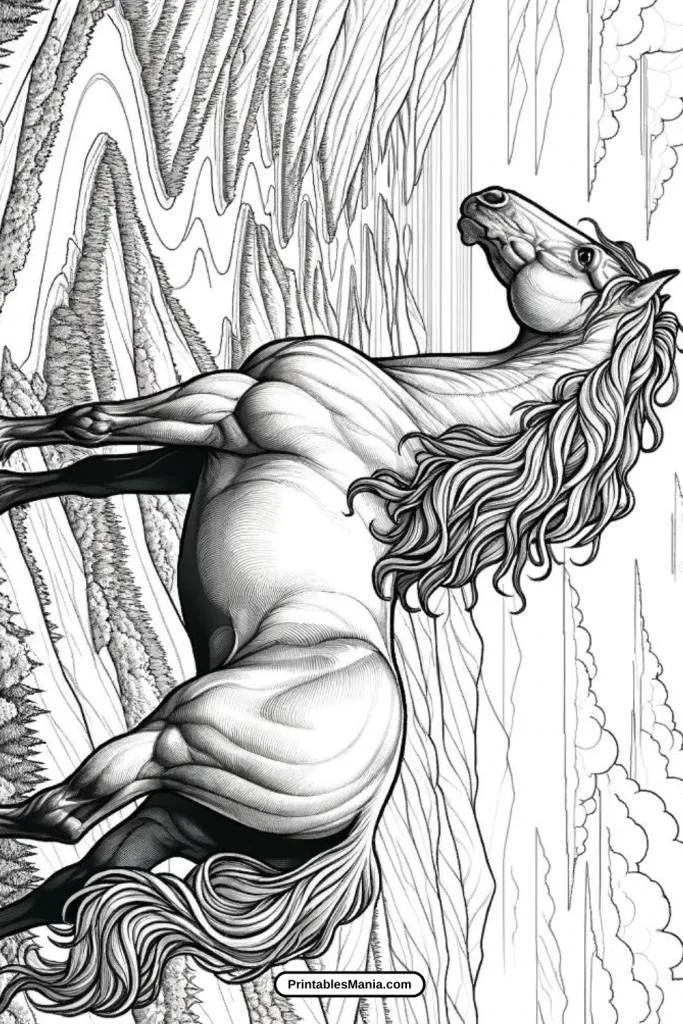
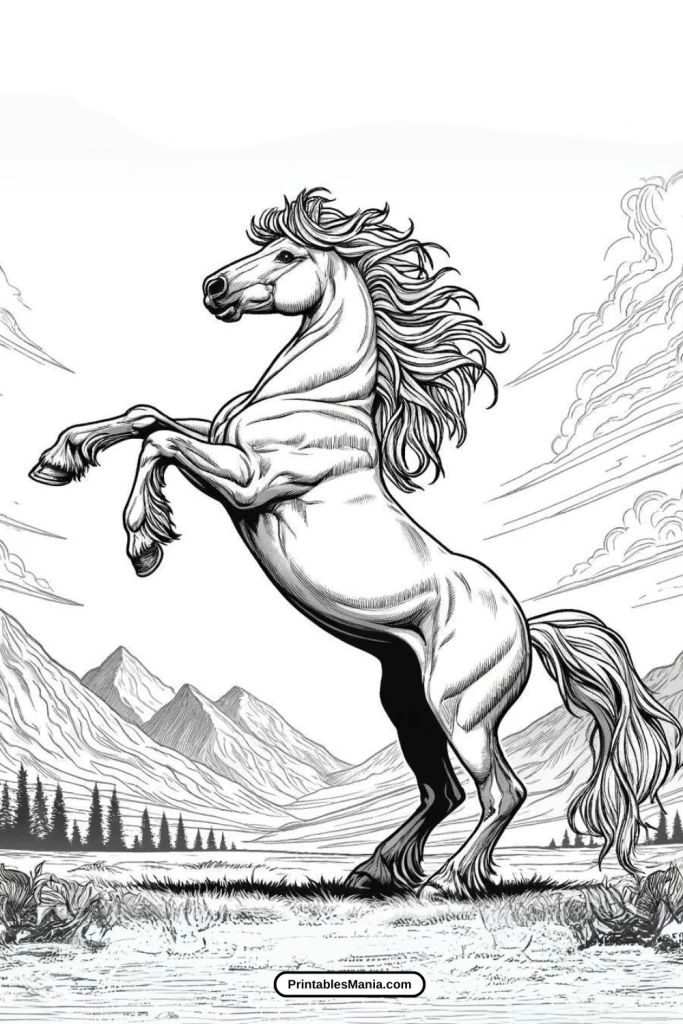
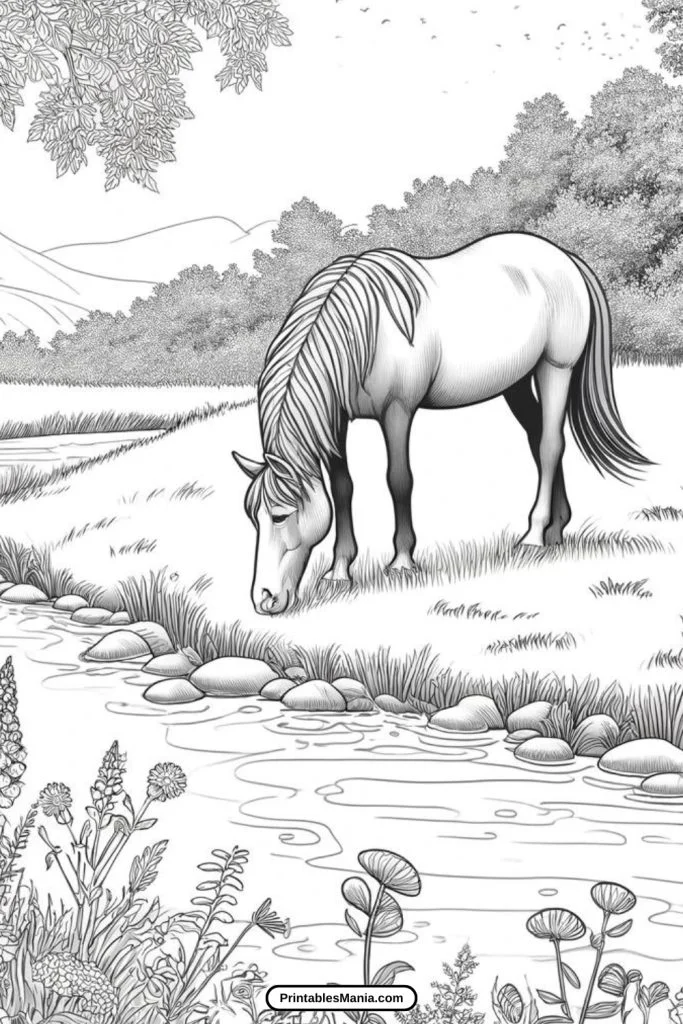
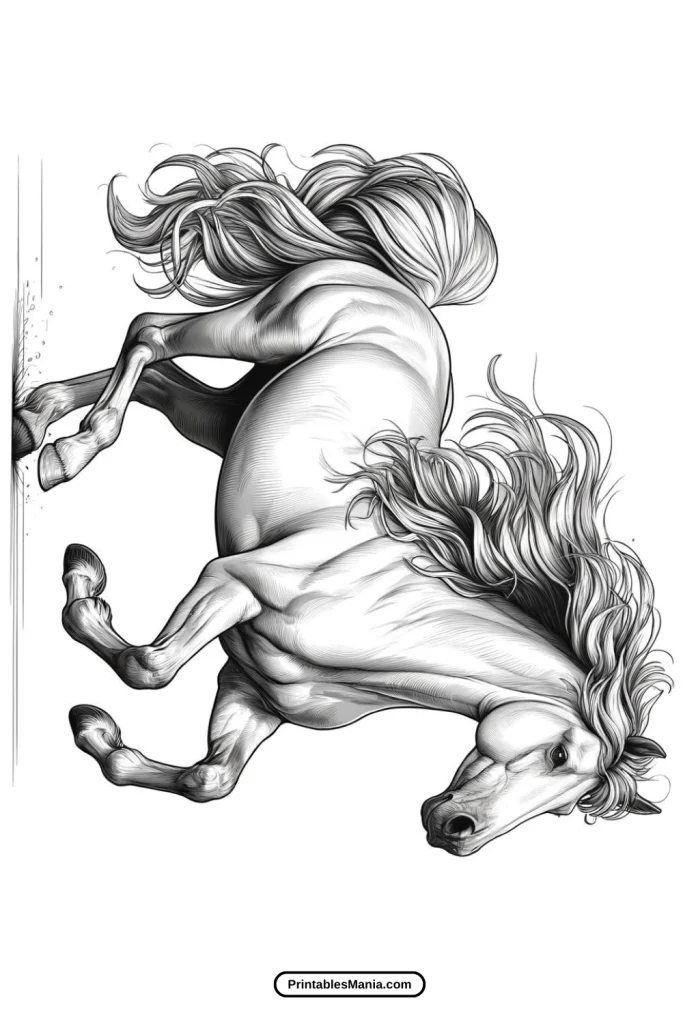
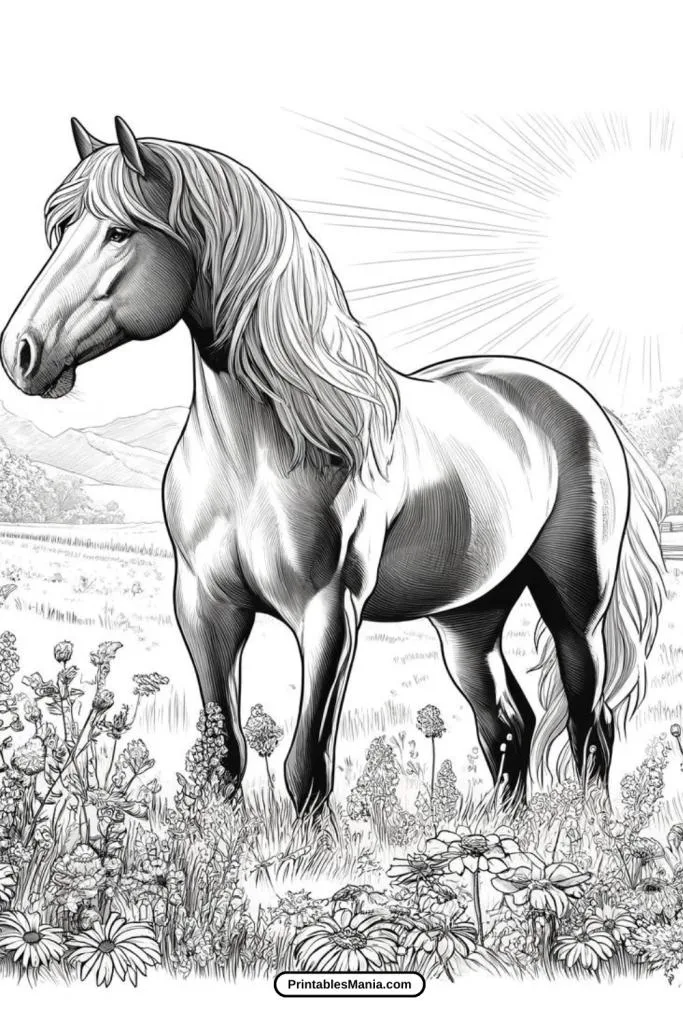
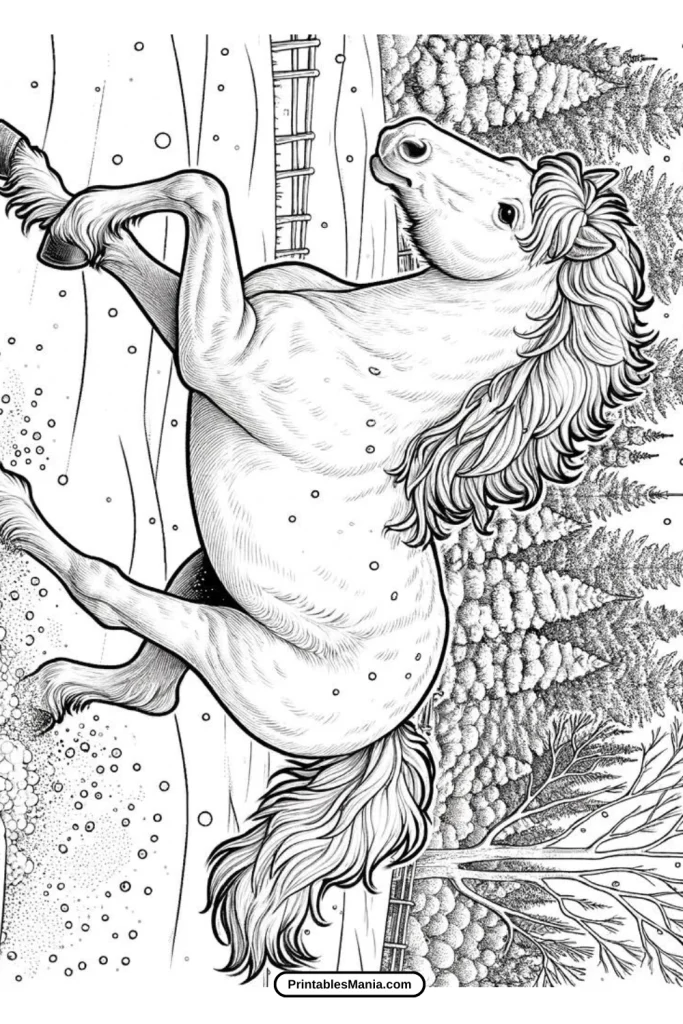
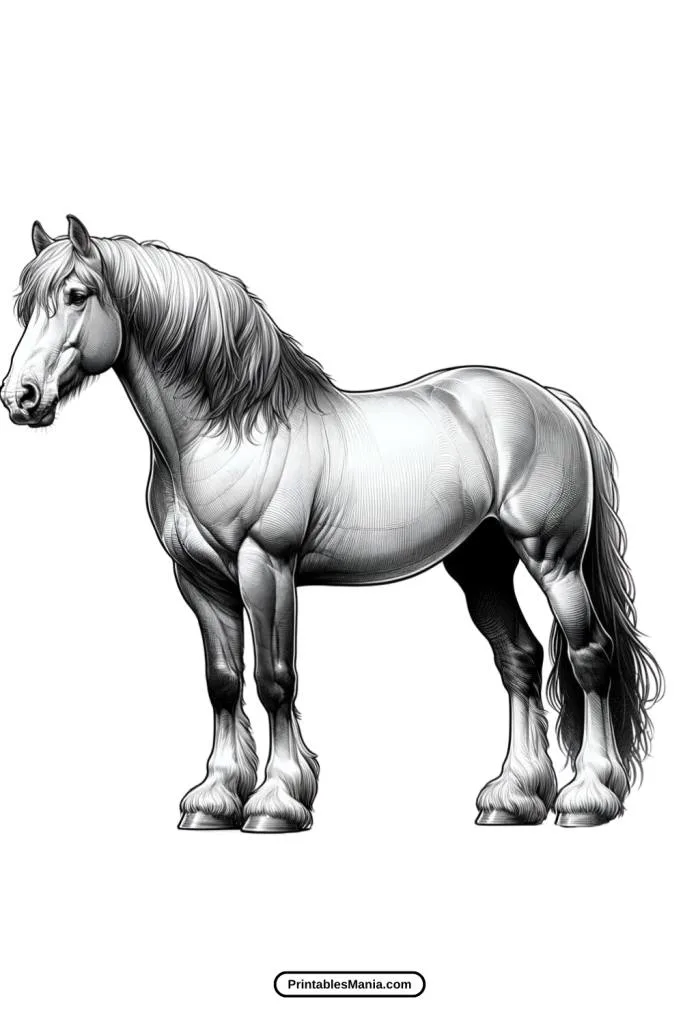
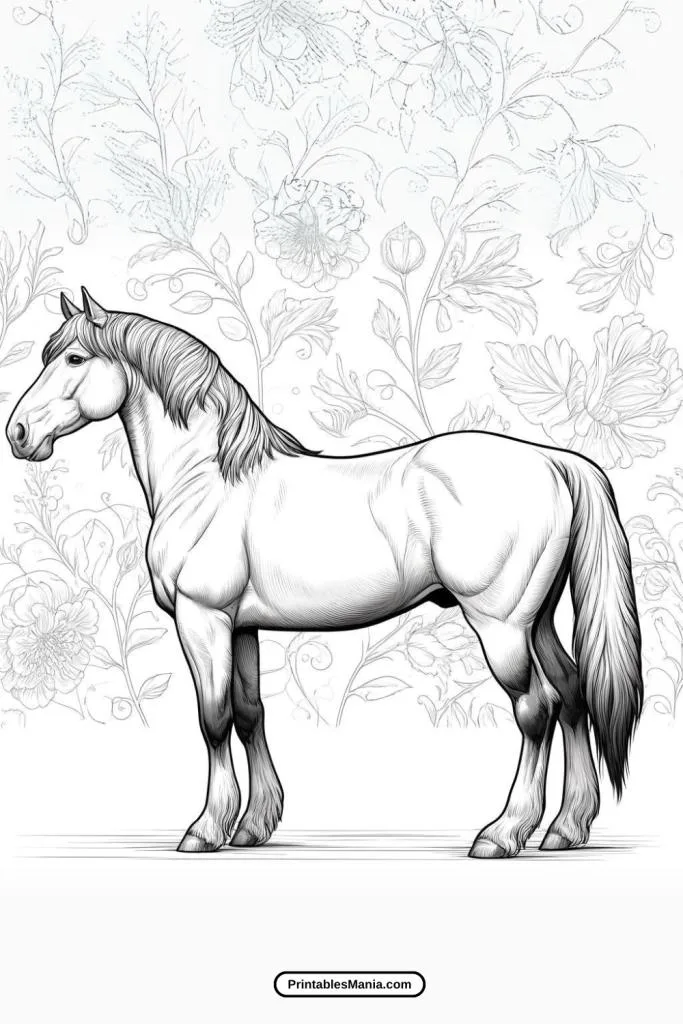
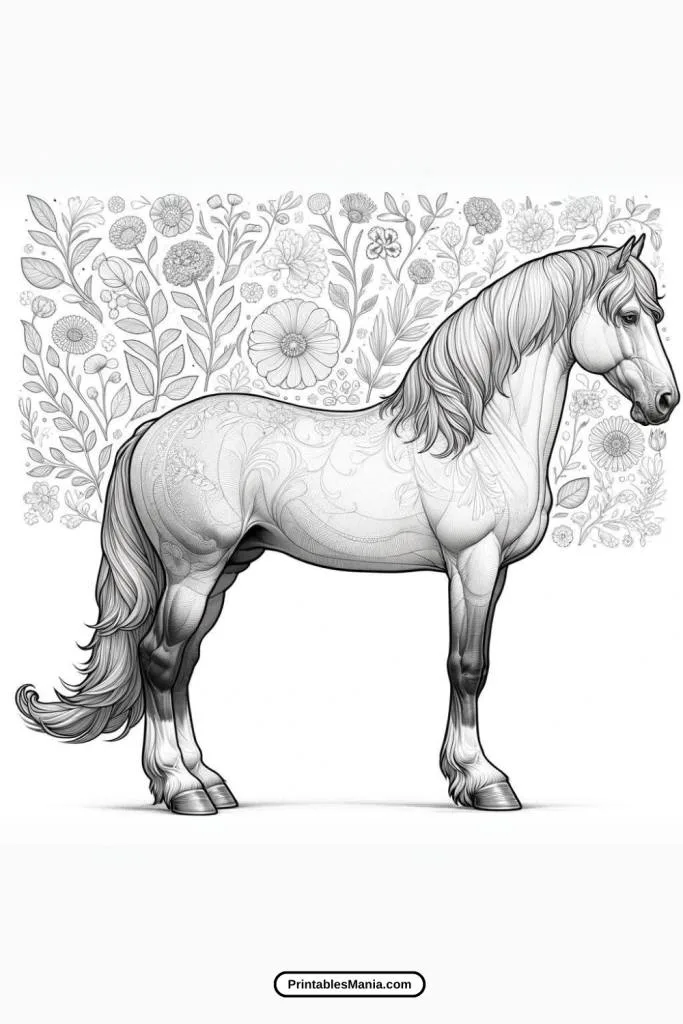
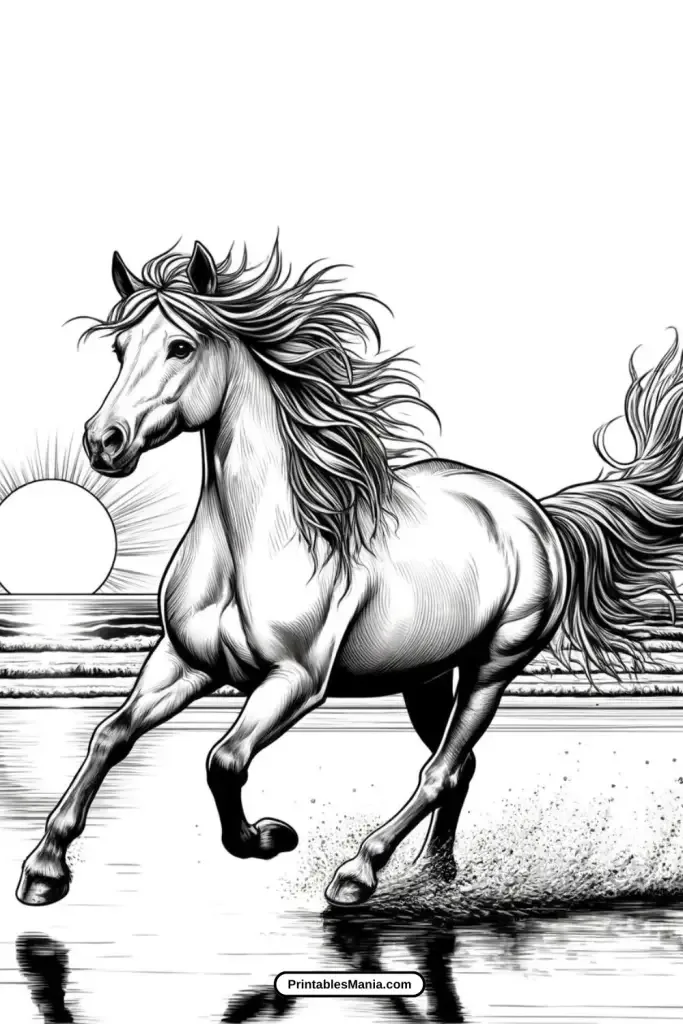
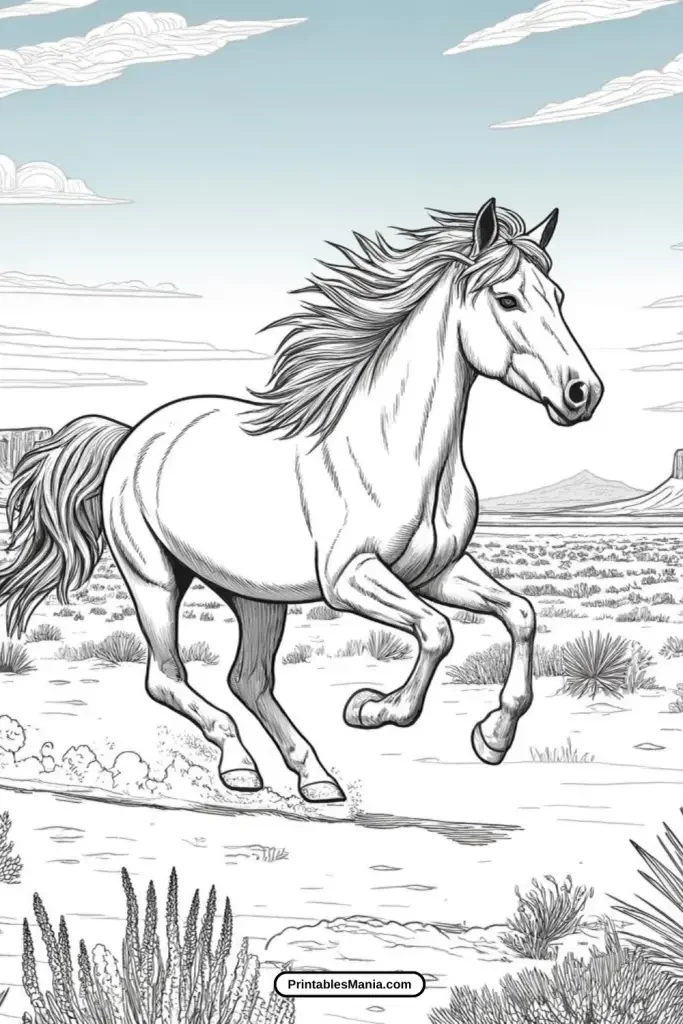
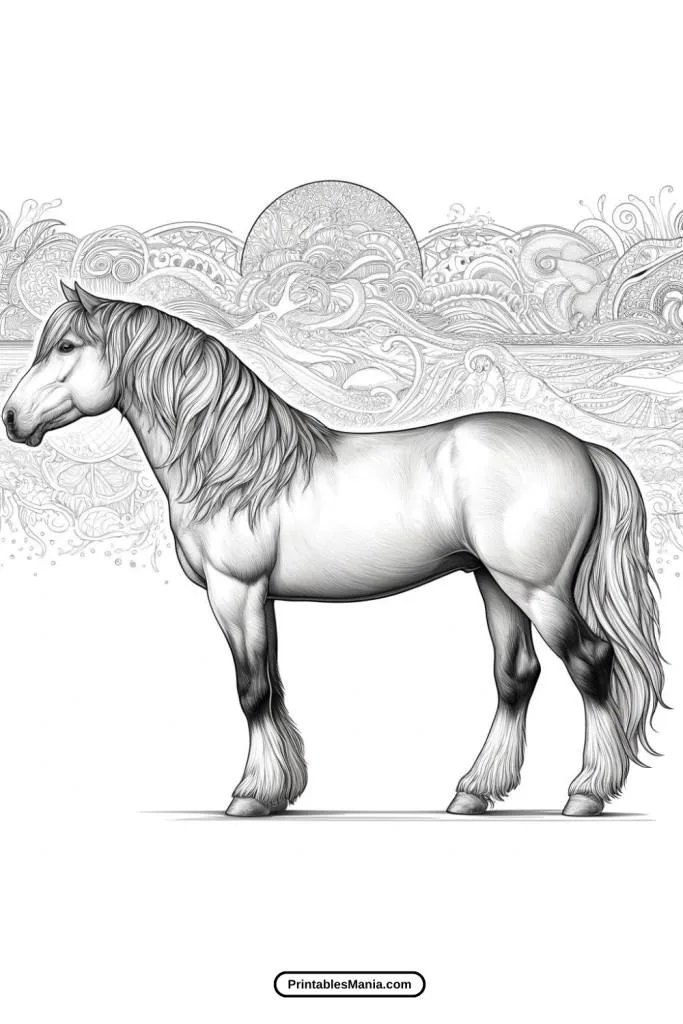
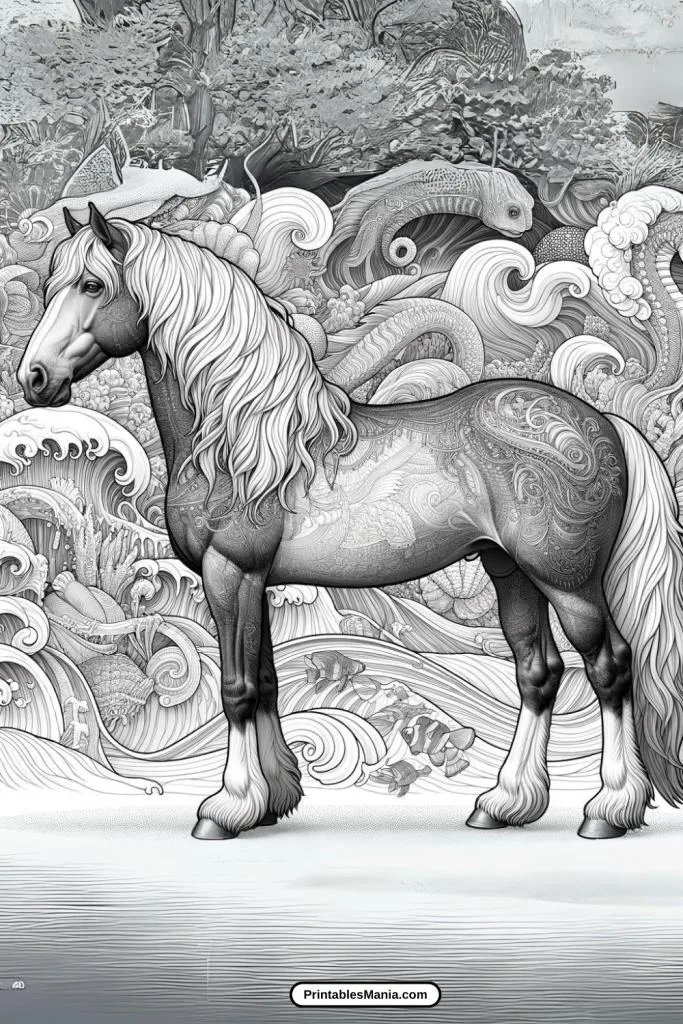
Art Tips and Techniques
Enhance your coloring experience with our realistic horse coloring pages by mastering various art techniques. Below are some tips and tricks to help you create stunning and vibrant artwork.
Choosing Colors
- Natural Tones: To achieve a realistic look, consider using natural horse colors such as browns, blacks, grays, and whites. Observe real horse images for inspiration on coat patterns and color variations.
- Creative Palettes: Feel free to explore creative color choices for a more whimsical or fantastical effect. Bright and unusual colors like blues, purples, and pinks can add a unique flair to your illustrations.
- Harmonious Combinations: Use a color wheel to select complementary colors that enhance each other. Harmonious color schemes make your artwork more visually appealing.
Blending Techniques
- Colored Pencils: Start with light, even layers and gradually build up the color. Use a blending pencil or a soft tissue to blend colors smoothly. For a softer transition, try burnishing, which involves pressing down harder with a lighter pencil over darker layers.
- Markers: Alcohol-based markers are excellent for smooth blending. Work quickly while the ink is still wet to merge different shades seamlessly. You can also use a colorless blender marker to create soft edges and gradients.
- Crayons: While crayons might not blend as easily as pencils or markers, you can still achieve a beautiful effect. Layer different colors lightly and use a paper towel or your finger to blend them gently.
Medium Suggestions
- Crayons: Great for younger artists, crayons are easy to use and offer a wide range of colors. They are perfect for bold, vibrant artwork and can be blended with some practice.
- Colored Pencils: These are versatile and allow for detailed work and blending. They’re ideal for realistic coloring due to the control they offer.
- Markers: Alcohol-based markers provide vibrant colors and smooth blending. They are excellent for creating bold and vivid illustrations but require quick work to blend effectively.
- Digital Tools: For those who prefer digital art, apps like Procreate or Adobe Fresco offer a variety of brushes and blending tools that mimic traditional media. Digital coloring allows for easy corrections and endless color choices.
Additional Tips
- Shading and Highlights: Pay attention to light sources in your illustrations. Adding shading and highlights can give your horse a three-dimensional appearance. Use darker shades for shadows and lighter colors or a white pencil for highlights.
- Textures: Create realistic textures by varying your strokes. Short, quick strokes can mimic fur, while longer, smooth lines are great for tails and manes.
- Patience: Take your time to build up layers and blend colors gradually. Rushing can lead to uneven and less polished results.
Experiment with these techniques to find what works best for you. Happy coloring!
What to Do with the Colored Page?
You’ve finished coloring your beautiful horse illustration, and now you’re wondering what to do next. Here are some creative and practical ideas for displaying and using your completed coloring page:
Display Your Artwork
- Frame It: Choose a nice frame to showcase your artwork. This not only protects the page but also allows you to display it proudly in your home or office.
- Create a Collage: Combine your colored pages with other pieces of art to create a unique collage. This can be a fun project and a great way to showcase multiple artworks together.
- Bulletin Board: Pin your coloring pages to a bulletin board. This is a fantastic way to keep your space lively and motivational with your colorful creations.
Share with Others
- Gifts: Personalized, hand-colored pages make thoughtful gifts. Consider giving them to family and friends for birthdays, holidays, or just because.
- Greeting Cards: Fold your colored page into a unique and personal greeting card. This adds a special touch to any message you want to send.
- Social Media: Share your artwork on social media platforms. Use hashtags related to coloring and horses to connect with other enthusiasts and get feedback on your work.
Creative Uses
- DIY Projects: Incorporate your coloring pages into DIY projects. Use them for scrapbooking, making bookmarks, or creating custom notebooks and journals.
- Educational Tools: For teachers and parents, use colored pages as educational tools. They can help teach children about colors, animals, and the joy of completing a creative project.
- Decoupage: Use your colored pages in decoupage projects. Decorate items like boxes, furniture, or even walls by adhering your artwork with decoupage glue.
Preserve Your Work
- Art Portfolio: Keep a portfolio of your colored pages to track your progress and revisit your favorite pieces. This can be a great source of inspiration and pride.
- Digital Archive: Scan and save digital copies of your colored pages. This way, you can preserve your artwork and share it easily without worrying about damage or loss.
Community Engagement
- Coloring Clubs: Join a local or online coloring club. Share your finished pages and exchange techniques and tips with fellow colorists.
- Charity: Consider donating your colored pages to local hospitals, nursing homes, or community centers. Your artwork can brighten someone’s day and spread joy.
Whatever you choose to do with your colored page, remember to take pride in your creative effort. Every piece of art you create is a unique expression of your imagination and skill.

